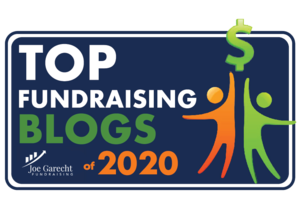“I didn’t hear how my giving was making a difference, so I stopped giving.”
This is the too-common statement you might hear from over half of the donors on your active donor file. They gave their gift. You didn’t show them how their giving made a difference. So, they went away. It’s about that simple – and tragic.
This is one of the most perplexing aspects in donor relationships. And it’s so easy to solve, if the persons in charge of program truly understand the connection between the money they get to spend and the donor needing to know what good is actually happening as a result of their giving.
Think about it. You give someone $100 to get something done. But there’s no evidence that it got done, nor is the person you gave the money to telling you it was done. Will you give that person another $100? No, you won’t.
But that’s how the whole system works in many non-profits. We work really hard to get the money from the donor, and then we don’t make much of an effort to report on the good the money did. It doesn’t make sense.
And then there’s the reality faced by the midlevel person or the MGO or PGO, when they try to get this information. Many program folks state that they don’t have the information, or it’s too hard to get, or they don’t really have enough time right now to deal with it.
It’s not important.
Now, to be clear, there are a lot of program people who are do a great job of creating and managing programs that have a strong outcome feedback mechanism in them. And they’re doing an excellent job. But sadly, Jeff and I, and our team of front-line people, are daily faced with the opposite. And the result is a front-line fundraiser who is discouraged and ineffective.
Here are some steps you can take to repair this situation:
- Conduct a donor value attrition analysis of your active donor file. Value attrition analysis measures what the same donors give over time. The average value attrition every year in every unmanaged donor file we have ever analyzed is between 40-60%! This means that 10 donors giving $1,000 last year for a total of $10,000 will give, together, between $4,000 and $6,000 this year. That’s a loss of four to six thousand dollars! In one year!
- I know you may think that your organization doesn’t have this kind of negative performance. I know. Everyone thinks that, in every sector of philanthropy. But we’ve done the analysis, and we know it isn’t true. You’re losing a significant amount of money every year from the same donors because they don’t know their giving is making a difference.
- So, do this analysis to see what your value attrition is. You’ll be shocked. And if you don’t know how to do it, we’ll do it for you at no cost, just to prove the point.
- Take this information to management so they can see (and feel) the losses you’re experiencing. It will be pretty convincing that something needs to be done. And they’ll begin to understand how important it is to properly take care of the donors you have. Don’t be fooled by a statement like: “Well, I don’t see how that’s possible when we’re growing by X or Y%.” Well, here’s the answer to that statement. The growth is the result of the new money coming in from new donors, covering up the loss of the money from the older donors. That’s all it is.
- When you show this information to management, tell them that the solution is to have immediate feedback (outcomes) on how a donor’s giving is making a difference. And that this feedback needs to be built into how your programs are managed and evaluated. This will start the discussion on creating a strong outcomes reporting system in your organization.
- Conduct training with the non-fundraising departments on how fundraising works. This is training directed to program, HR, finance, operations, the executive team, etc. – all the non-fundraising departments. We suggest you do each of them in separate sessions. I know this is a lot of work, but believe me, it will be easier to deal with the specific ways each area can be more supportive of the donor relationship with the organization.
- The objective of this training should be to help those present understand the driving philosophy of fundraising, how it works and what their role is in treating the donor in a manner that honors and respects them and retains them. This is also training we do, if that is something we can help you with. My point here is that often, non-fundraising employees really don’t understand where the money they spend and earn comes from. It’s hard to believe, I know. But it’s true. So, helping them see how donors think and what they expect in their relationship to you is very important.
Please take steps to do something about this in your organization, as it will help you retain and upgrade your caseload donors; and it will create an environment in your organization that honors and respects them. And that’s good for them, for you and for the net revenue you need to pay for the good programs your organization is doing.
Richard







0 Comments